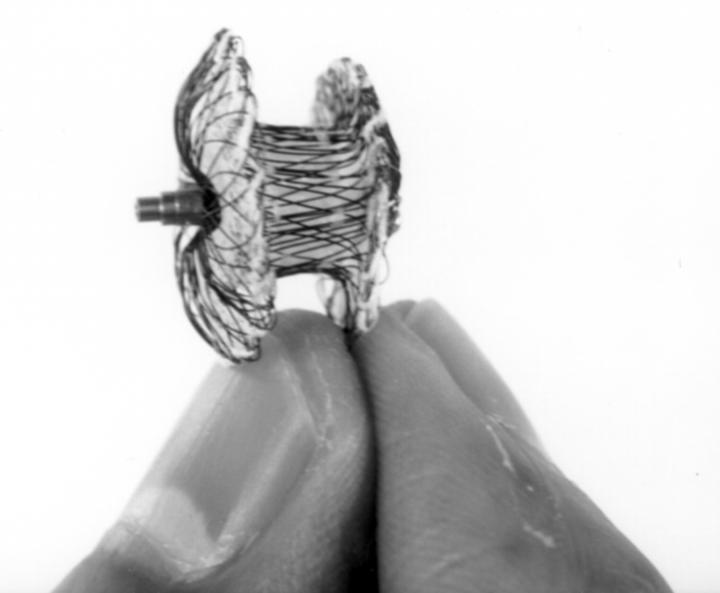Abstract
A 5 year old girl with a haemodynamically significant mid-muscular ventricular septal defect (VSD) had successful transcatheter closure using the Amplatzer VSD occluder. This device passes through a small diameter sheath and can be easily retrieved or repositioned. These properties may make it a suitable device for closure of large mid-muscular defects in small children. Keywords: Amplatzer septal occluder; congenital heart defects; ventricular septal defect; transcatheter occlusion
Full Text
The Full Text of this article is available as a PDF (83.0 KB).
Figure 1 .
A close up view of the Amplatzer VSD occlusion device shows the two concave retention discs projecting 4 mm beyond the 9 mm wide × 7 mm long central stent. The retention discs contain polyester patches, and the central stent is filled with polyester fibres. The right ventricular disk has a microscrew attached.
Figure 2 .

Cine frames in the long axis projection. (A) Left ventriculogram shows a moderately sized mid-muscular VSD with left to right shunting. (B) The Amplatzer VSD occluder has been deployed in the defect but is still attached to the delivery cable. (C) Repeat left ventriculogram after release of the device shows some residual shunt through the device. The degree of residual shunting became trivial on follow up echocardiography.



